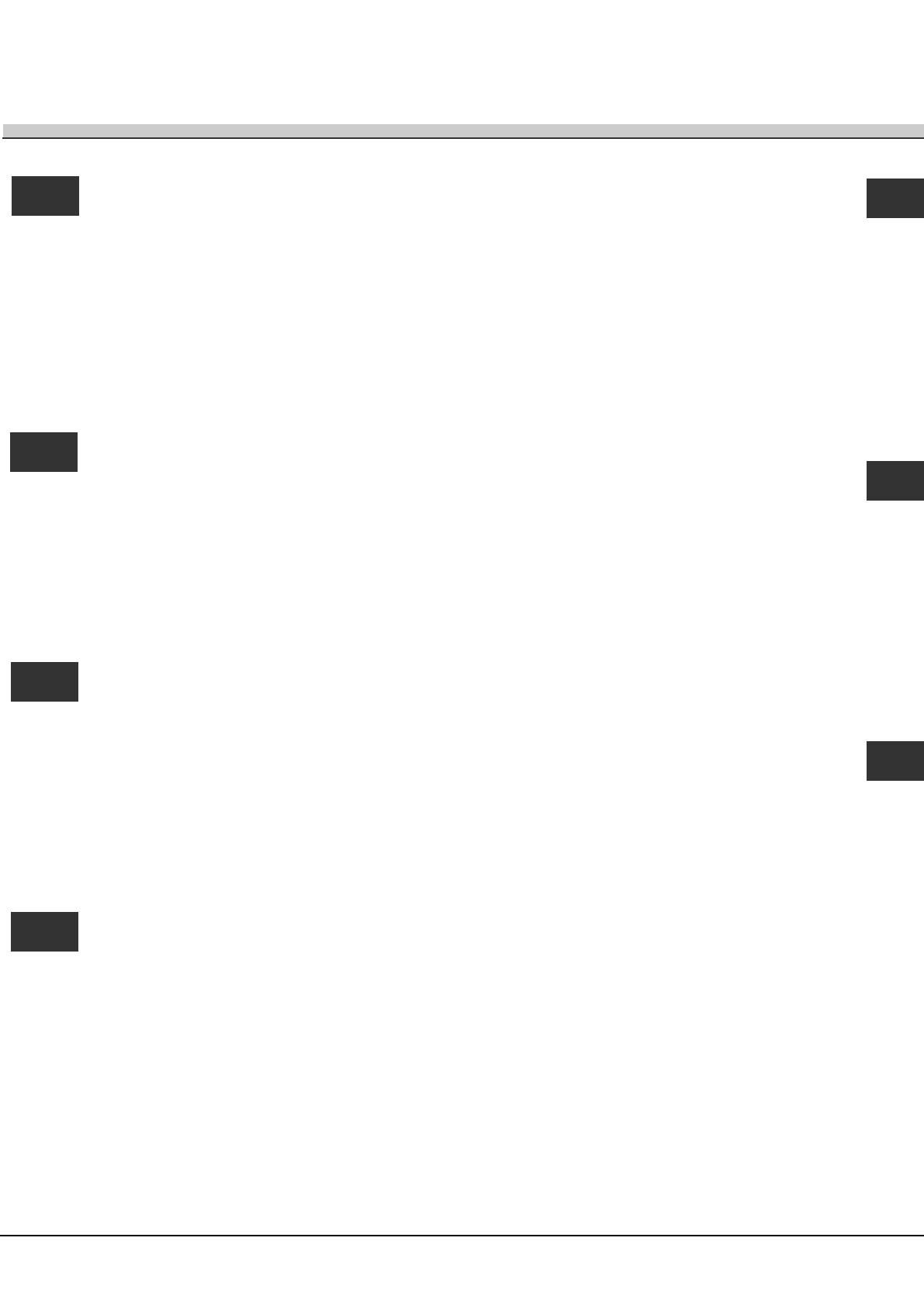
62
HPI 95
-Posizionare la cappa e segnare i fori degli alloggiamenti dei
supporti “E”
-forare la parete posizionando i supporti, eseguendo un foro per
ogni asola: eseguire n° 4 fori (tasselli
∅8∅8
∅8∅8
∅8 in dotazione)
-fissare con le viti i supporti e appoggiare la cappa a tali
supporti
-per regolare la posizione della cappa allentare le viti dei
supporti e regolarne l’altezza
-terminata la regolazione fissare le viti e segnare posizione
viti antiribaltamento
-togliere la cappa ed eseguire n°2 fori
(tasselli
∅8∅8
∅8∅8
∅8 in dotazione)
-appoggiare la cappa
sui supporti e fissare le viti
antiribaltamento “P”
IT
-Position the hood and mark the holes for the supports "E"
-drill the holes in the wall and position the supports, making a
hole for each slot: make 4 holes (anchors
∅8∅8
∅8∅8
∅8 provided)
-secure the supports with the screws and rest the hood on
these supports
-to adjust the position of the hood, loosen the screws of the
supports and adjust the height
-once adjustment is completed, tighten the screws and mark
the position of the roll bar screws
- remove the hood and make 2 holes (anchors
Æ8 provided)
-rest the hood on the supports and secure the roll bar
screws "P"
GB
- Placez la hotte et marquez les trous pour le logement des
supports " E "
- Percez la paroi pour placer les supports en perçant un trou pour
chaque ouverture. Vous devrez donc réaliser 4 trous (chevilles
∅8∅8
∅8∅8
∅8 fournies)
- Vissez les supports et posez-y la hotte
- Pour régler la position de la hotte, dévissez les vis des supports
et réglez la hauteur
- Au terme du réglage, serrez les vis et marquez la position des
vis de maintien
- Retirez la hotte et percez 2 trous (chevilles
Æ8 fournies)
- Posez la hotte sur les supports et vissez les vis de maintien
" P "
- Die Dunstabzugshaube an der gewünschten Position anlegen
und die Bohrungen für die Halterungen "E" anzeichnen
- das Bohrloch ausführen, dabei die Halterungen anlegen und
jeweils nur eine Bohrung pro Schlitz ausführen: 4 Bohrlöcher
müssen ausgeführt werden (Dübel
∅8∅8
∅8∅8
∅8 sind mitgeliefert)
- die Halterungen mit den Schrauben befestigen und die
Dunstabzugshaube an den Halterungen befestigen
- zur Ausrichtung der Abzugshaube die Schrauben der
Halterungen lockern und die Höhe einstellen
- Nach der Ausrichtung die Schrauben anziehen und die
Kippsicherungsschrauben anzeichnen
- die Haube abnehmen und 2 Bohrlöcher ausführen (Dübel
Æ8
sind mitgeliefert)
- die Haube an den Halterungen befestigen und die
Kippsicherungsschrauben "P" anbringen
FR
- Plaats de kap en teken de gaten voor het ophangen van de
steunelementen "E"
- boor de gaten in de wand, plaats de steunelementen, en maak
een opening voor elk gaatje: maak 4 gaten (pluggen
∅8∅8
∅8∅8
∅8
bijgeleverd)
- bevestig de schroeven in de steunelementen en hang de kap
aan de elementen
- voor het bepalen van de positie van de kap moeten de
bevestigingsschroeven van de steunen los worden gedraaid en
de hoogte van de steunen geregeld.
- als het afregelen is beëindigd draait u de schroeven vast en
markeert u de plaats van de schroeven die het kantelen voorkomen
- verwijder de kap en maak 2 gaten (pluggen Æ8 bijgeleverd)
- plaats de kap op de steunelementen en bevestig de
schroeven "P" die het kantelen voorkomen
- Posicione la campana y marque los orificios para alojar los
soportes "E"
- perfore la pared posicionando los soportes, realice un orificio
para cada ranura: o sea, 4 orificios (tacos
∅8∅8
∅8∅8
∅8 suministrados con
el aparato)
- fije los soportes con los tornillos y apoye la campana en dichos
soportes
- para regular la posición de la campana, afloje los tornillos de
los soportes y regule su altura
- finalizada la regulación, fije los tornillos y marque la posición de
los tornillos antivuelco
- quite la campana y realice los 2 orificios (tacos
Æ8 suministrados
con el aparato)
- apoye la campana en los soportes y fije los tornillos
antivuelco "P"
NL
ES
DE
-Posicione o exaustor e marque os furos das sedes
dos suportes “E”.
-Fure a parede posicionando os suportes, efectuando
um furo para cada fenda: Realize 4 furos (buchas
∅8∅8
∅8∅8
∅8
fornecidas com o produto)
-Fixe com os parafusos os suportes e apoie o
exaustor sobre os mesmos.
-Para regular a posição do exaustor, solte os parafusos
dos suportes e regule a altura.
-Uma vez terminada a regulação, fixe os parafusos e
marque a posição dos parafusos anti-capotamento.
-Remova o exaustor e realize 2 furos (buchas Æ8
fornecidas com o produto)
-Apoie o exaustor sobre os suportes e fixe os parafusos
anti-capotamento “P”.
PT








